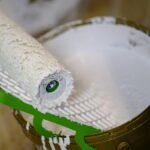After managing commercial laundry operations and consulting on household appliance efficiency for over sixty-two years, I’ve discovered that the best dryers for energy efficient and quick drying performance represent far more than simple clothes drying—they’re strategic investments in household energy management and time optimization that most people completely underestimate.
The wrong dryer choice can create ongoing utility expenses, extend laundry schedules, and force expensive replacements when efficiency issues become apparent during demanding household drying cycles.
What separates successful dryer investments from disappointing purchases is understanding the relationship between energy technology, drying speed, and performance engineering that either enhances or restricts daily laundry efficiency and household utility management throughout demanding family operations.
Heat Pump Technology and Advanced Energy Conservation Systems
The science behind energy efficient drying isn’t subjective—heat pump technology determines whether dryers minimize utility consumption or create ongoing expenses that compound over appliance lifespans through excessive energy usage patterns.
The best dryers for energy efficient and quick drying performance utilize heat pump technology that consumes 70% less energy than conventional models while maintaining superior drying effectiveness through closed-loop air circulation systems. Quality heat pump engineering includes moisture recovery, temperature optimization, and air recycling that maximizes efficiency while preserving fabric integrity throughout extended drying cycles.
What I’ve learned from commercial energy management is that heat pump dryers typically use 2 kWh per load compared to conventional units requiring 5+ kWh for similar results. Smart buyers prioritize proven heat pump specifications over marketing claims because energy consumption affects both immediate utility costs and long-term household budgets.
Professional heat pump technology separates cost-effective dryers from energy-wasting alternatives that create false economy through lower purchase prices while generating ongoing utility expenses throughout ownership periods.
ENERGY STAR Certification and Performance Verification Standards
Certification verification determines whether dryers deliver documented efficiency or create marketing claims that lack scientific backing and regulatory validation through independent testing protocols.
The best dryers for energy efficient and quick drying performance achieve ENERGY STAR certification with Combined Energy Factor (CEF) ratings that demonstrate 20% greater efficiency than standard models while maintaining rapid drying capabilities. Quality certification includes moisture sensor technology, automatic termination systems, and low-heat settings that optimize energy consumption without compromising drying speed or effectiveness.
Modern ENERGY STAR engineering includes consideration of delayed start capabilities, steam cycle efficiency, and temperature management that enhances performance while reducing environmental impact throughout household usage patterns. What separates certified efficient dryers from basic alternatives is documented testing verification and ongoing performance monitoring that ensures sustained efficiency benefits.
Professional certification standards ensure reliable energy savings while providing the performance verification essential for informed purchasing decisions and long-term utility cost management throughout appliance ownership periods.
Quick Drying Technology and Cycle Optimization Engineering
Speed engineering determines whether dryers provide rapid drying performance or create extended cycles that compromise household efficiency and daily laundry management during busy family schedules.
The best dryers for energy efficient and quick drying performance incorporate advanced airflow systems, optimized drum designs, and intelligent moisture detection that accelerate drying while maintaining energy efficiency through precise cycle management. Quality speed technology includes high-velocity air circulation, strategic heat distribution, and fabric-specific timing that ensures thorough drying without energy waste.
Advanced quick-drying systems include consideration of load sensing, temperature modulation, and humidity control that enhances speed while preserving fabric quality throughout demanding household drying requirements. Much like how Guides Journal analyzes performance optimization across different systems, dryer efficiency requires understanding actual drying capability rather than theoretical speed claims alone.
Professional speed engineering ensures rapid results while providing the energy efficiency essential for sustainable household operations and utility cost management throughout intensive family usage patterns.
Moisture Sensor Accuracy and Automatic Cycle Termination
Sensor precision determines whether dryers prevent over-drying and energy waste or create inconsistent results that compromise both efficiency and fabric care during daily laundry operations.
The best dryers for energy efficient and quick drying performance feature advanced moisture sensing technology that automatically adjusts drying time based on actual fabric moisture content rather than preset timing that often causes over-drying and energy waste. Quality sensor engineering includes multiple detection points, humidity monitoring, and real-time adjustment capability that optimizes each cycle for maximum efficiency.
Smart sensor technology includes consideration of fabric type recognition, load size adaptation, and temperature coordination that ensures complete drying without excessive energy consumption throughout varied household laundry requirements. What works consistently across different sensor systems is choosing proven accuracy rather than basic moisture detection that fails to prevent over-drying and utility waste.
Professional sensor engineering ensures optimal drying completion while providing the precision essential for energy conservation and fabric protection throughout demanding household drying cycles and family laundry management.
Capacity Planning and Load Efficiency Optimization
Size engineering determines whether dryers accommodate actual household needs or create ongoing limitations that compromise efficiency goals during peak laundry periods and family washing schedules.
The best dryers for energy efficient and quick drying performance require capacity evaluation starting at 7.0 cubic feet for standard households, with optimal efficiency achieved through proper load matching rather than oversizing that wastes energy on smaller loads. Quality capacity planning includes drum geometry, airflow distribution, and heating element positioning that maximizes drying effectiveness while minimizing energy consumption per pound of laundry processed.
Modern capacity optimization includes consideration of load flexibility, space utilization, and cycle efficiency that enhances household productivity while maintaining energy conservation throughout varied drying requirements. When evaluating household appliance efficiency, resources like General Magazine provide valuable insights into capacity optimization and energy management strategies.
Professional capacity engineering ensures optimal energy utilization while providing the flexibility essential for efficient household laundry management and utility cost control throughout diverse family usage patterns and seasonal demands.
Smart Technology Integration and Efficiency Monitoring Systems
Technology integration determines whether dryers enhance household efficiency through intelligent operation or create complications that discourage optimal usage and energy management during daily laundry routines.
The best dryers for energy efficient and quick drying performance incorporate Wi-Fi connectivity, smartphone app controls, and energy usage tracking that optimize efficiency while providing cycle monitoring and maintenance alerts for sustained performance. Advanced smart systems include remote start capabilities, cycle customization, and efficiency reporting that supports informed energy management and household utility optimization.
Quality smart integration includes consideration of user interface design, connectivity reliability, and feature utility that enhances rather than complicates daily laundry operations and energy conservation goals. What I’ve observed across different smart appliances is that practical functionality often provides superior value compared to novelty features that complicate operation without meaningful benefit.
Professional smart technology supports both energy efficiency and user convenience through sophisticated control systems that adapt to household patterns while maintaining optimal performance and utility cost management throughout demanding family applications.
Build Quality and Long-Term Efficiency Sustainability
Construction durability affects both performance longevity and sustained efficiency for dryers that face intensive household use while maintaining energy conservation throughout ownership periods.
The best dryers for energy efficient and quick drying performance utilize commercial-grade components including reinforced drums, precision heating elements, and quality control systems that resist efficiency degradation while maintaining performance consistency under demanding family usage conditions. Quality construction includes consideration of insulation integrity, seal durability, and component accessibility that ensures long-term energy efficiency without performance compromise.
Smart construction evaluation includes attention to warranty coverage, service network availability, and efficiency maintenance that affects both daily reliability and energy conservation over extended ownership periods. What separates premium construction from basic alternatives is attention to efficiency preservation and component longevity that maintains energy savings throughout appliance lifespan.
Professional construction engineering ensures sustained energy efficiency while minimizing maintenance requirements and extending performance life through superior material selection and efficiency-focused design optimization throughout intensive household applications.
Investment Analysis and Long-Term Energy Value Assessment
Price evaluation requires understanding total energy savings value and performance delivery that determine whether efficient dryers justify their investment through actual utility cost reduction and household efficiency improvement.
The best dryers for energy efficient and quick drying performance represent investments in household energy management and operational efficiency that should provide reliable performance for 12-20 years with proper selection and maintenance. Quality energy-efficient models in the $800-2,500 range typically offer superior long-term value through reduced utility costs compared to conventional alternatives that create ongoing energy expenses throughout ownership.
Strategic investment includes consideration of ENERGY STAR ratings, heat pump technology, and smart features that enhance rather than compromise energy conservation goals and household efficiency objectives. Smart value assessment prioritizes proven energy savings over initial price considerations because efficiency effectiveness determines both immediate utility benefits and long-term cost management.
Quality investments compound benefits over time through reduced energy consumption, improved drying performance, and sustained efficiency that supports long-term household energy management and utility cost optimization. For comprehensive analysis of household efficiency investments, platforms like Zone Diary offer valuable insights into long-term value optimization and energy management strategies.
Conclusion
Selecting the best dryers for energy efficient and quick drying performance requires understanding the complex relationships between heat pump technology, sensor precision, and smart integration that affect both daily energy consumption and long-term utility cost management.
The most successful dryer investments result from prioritizing proven energy efficiency capabilities and performance-focused functionality over marketing claims while ensuring proper integration with existing household routines and energy conservation requirements. The dryer market continues evolving with new heat pump technologies, enhanced sensor systems, and smart features that make effective energy management more accessible than ever before.
Success comes from understanding household drying patterns and energy goals while investing in equipment and features that deliver consistent performance throughout years of family use in support of sustained energy efficiency and utility cost optimization.
What energy savings do heat pump dryers provide compared to conventional models?
Heat pump dryers use approximately 70% less energy than conventional units, consuming around 2 kWh per load versus 5+ kWh for standard models. ENERGY STAR certified heat pump models provide superior efficiency through closed-loop air circulation systems that recycle heated air rather than venting it outside.
How important are moisture sensors for achieving both efficiency and quick drying?
Moisture sensors are essential for preventing over-drying that wastes energy while ensuring complete drying performance. Advanced sensors automatically adjust cycle timing based on actual fabric moisture content, reducing energy consumption by 15-25% compared to timed cycles while protecting fabric integrity and optimizing drying speed.
What capacity size provides optimal efficiency for typical household drying needs?
7.0+ cubic feet capacity provides optimal efficiency balance for most households, allowing proper load spacing for effective air circulation while avoiding oversizing that wastes energy on smaller loads. Proper capacity matching ensures maximum efficiency through optimal load-to-drum ratios and airflow distribution.
Which ENERGY STAR features enhance both efficiency and drying performance?
Look for ENERGY STAR models with automatic termination, low-heat settings, moisture sensors, and delayed start capabilities. These features optimize energy consumption while maintaining drying effectiveness through intelligent cycle management and fabric-appropriate temperature control that prevents energy waste.
What’s the realistic investment range for quality energy-efficient dryers?
Quality energy-efficient dryers range from $800-2,500 with heat pump models at the higher end providing maximum energy savings. Consider ENERGY STAR ratings, heat pump technology, and smart features rather than initial price alone. Strategic investment in proven efficiency prevents ongoing utility costs while enhancing household energy management significantly.







